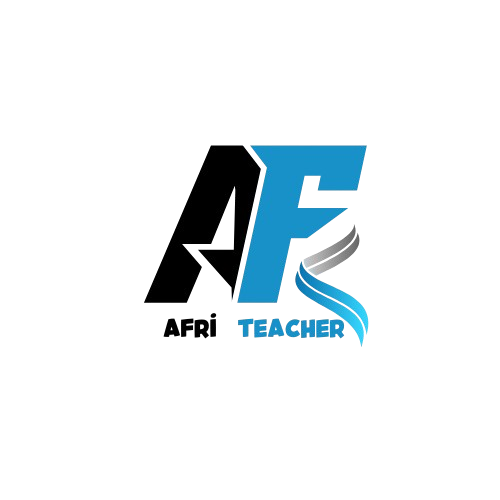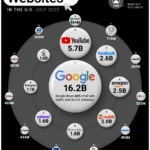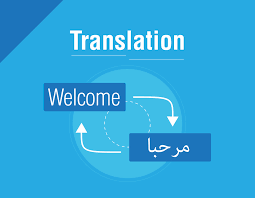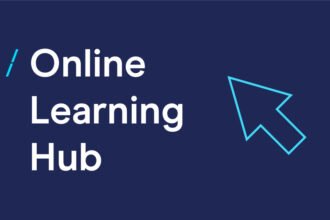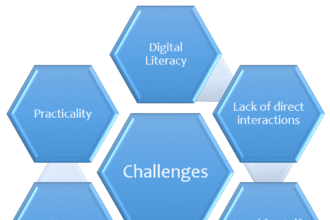The classroom is no longer confined to four walls. In an era defined by digital natives, the very fabric of education is being rewoven, thread by digital thread. The global shift towards online learning for kids is not just a trend; it’s a fundamental transformation of how our children acquire knowledge, develop skills, and interact with the world. For anyone operating in the digital space, understanding this seismic shift is not optional—it’s imperative.
The EdTech industry is a vibrant, chaotic, and incredibly fast-growing ecosystem. It’s a place where cutting-edge technology meets the timeless goal of nurturing young minds. From adaptive algorithms that personalize math problems to immersive platforms that make learning spanish online an adventure, the opportunities are boundless. This guide is your compass. We will navigate the key players, the emerging trends, the data driving decisions, and the very human element at the heart of this digital education boom. We’re moving beyond the hype to understand the substance of what makes this market tick.
The Unstoppable Rise of the Digital Classroom: More Than Just a Pandemic Pivot
Let’s be clear: the move to online education learning was accelerating long before the world heard the word “lockdown.” The pandemic acted as a catalyst, a global pilot program that forced a mass adoption of online learning platforms. What we discovered was a mixed bag—challenges with screen time and engagement, but also profound revelations about flexibility, accessibility, and the potential for personalized instruction.
Today, the dust is settling, and the landscape has permanently changed. Parents, now more than ever, are active participants in their children’s education. They are curators of digital content, seeking out the best online learning platforms to supplement schoolwork, nurture passions, and address learning gaps. They aren’t just looking for a digital textbook; they are seeking engaging, effective, and often, free online learning platforms to start their journey.
Live Daily Insight: A recent report from HolonIQ projects that the global EdTech market will reach $404 billion by 2025, with K-12 solutions representing a massive and rapidly expanding segment. The demand for supplementary online learning programs in STEM, literacy, and coding is growing at an unprecedented rate.
Understanding the Core Audience: Parents and Young Minds
To succeed in this space, you must think like your audience. The market is fundamentally bifocal, addressing two distinct user groups:
- The Child (The End-User): Their experience is everything. The platform must be intuitive, visually stimulating, and, most importantly, fun. This is where learning games and gamified online learning systems thrive. Platforms like Kahoot and IXL Learning have mastered this, turning quiz reviews into competitive, engaging experiences. The content must feel less like a lesson and more like play. For a five-year-old, online learning games for 5 year olds that teach phonics or basic counting through interactive stories are far more effective than static worksheets.
- The Parent (The Decision-Maker & Payer): Parents are driven by outcomes and safety. They ask: Will this help my child read better? Will it improve their math scores? Is it a safe digital environment? They are researching terms like benefits of online learning and comparing online learning platforms based on curriculum alignment, pedagogical approach, and reviews. They value progress tracking and reports, features that platforms like the Scholastic Learning Zone provide to keep them informed.
Decoding the Ecosystem: A Tour of Premier Online Learning Platforms
The world of online learning courses is vast and varied. Here’s a breakdown of the key models and players that are defining the industry.
The All-in-One Curriculum Hubs
These platforms aim to provide a comprehensive supplement to school education, covering a wide range of subjects from math and science to language arts.
- IXL Learning: A behemoth in the K-12 space, IXL offers a vast practice environment across thousands of skills. Its adaptive assessment pinpoints a child’s exact level and provides targeted practice, making it a powerful tool for mastering specific concepts.
- Scholastic Learning Zone: Leveraging the trusted Scholastic brand, this platform provides a digital portal for literacy and learning programs used by schools, offering a seamless bridge between classroom and home.
- DoodleLearning: This suite of apps (DoodleMaths, DoodleEnglish, etc.) creates a personalized work program for each child, building confidence and competence in core subjects through short, daily exercises.
The Specialized Skill Academies
These platforms focus on depth in a particular area, from coding to languages.
- Language Learning Online: The demand for learning english online and other languages is exploding. Platforms like Duolingo for Kids use gamification to make vocabulary and grammar stick. For more structured english learning online, services with live tutors are gaining immense traction.
- Coding and Computer Science: The new literacy. Platforms like Codecademy have paved the way for younger audiences. The trend of learning python is trickling down to high school and even middle school students, with python learning online courses designed specifically for teens becoming a major growth area. AI courses online free are also emerging as a niche but rapidly growing segment for advanced students.
- Professional & Adult-Upskilling Spillover: It’s important to note that parents exploring options for their children are often engaged in their own upskilling. They might be familiar with platforms like Coursera, edX, LinkedIn Learning, or O’Reilly Online Learning for their own careers, which shapes their expectations for their children’s tools. The CPA Australia body, for instance, offers CPA online learning through its CPA my online learning portal, illustrating the seamless blend of professional and personal development in the digital age.
The Power of Free: Democratizing Education
The availability of high-quality free online courses and free online learning platforms has been a game-changer for accessibility. Platforms like Alison Online Learning offer certificates in a wide range of subjects, while Coursera and edX provide free audit options for university-level courses. For younger kids, platforms like PBS Kids and National Geographic Kids offer incredible educational games and videos at no cost. This “freemium” model is a powerful customer acquisition tool, allowing families to experience the value before committing to a paid subscription.
The Marketer’s Playbook: Strategies for Engaging the Modern Family
Cracking the EdTech market requires a nuanced approach. The traditional hard sell is ineffective. Here’s how to build trust and drive engagement.
Content is King: Educate to Build Authority
Your content marketing strategy shouldn’t just sell; it should solve. Create resources that address parents’ core pain points and aspirations.
- Blog Posts: “5 Signs Your Child Would Benefit from a Maths Online Tutor,” “The Ultimate Guide to Free Online Learning Platforms for Elementary Students,” “How Learning Games Can Improve Reading Comprehension.”
- Webinars & Live Sessions: Host experts on topics like “Navigating Online Distance Learning Successfully” or “Raising Bilingual Children with Language Learning Online Tools.”
- Comparative Guides: “Platform A vs. Platform B: Choosing the Right Online Learning Platform for Your Child’s Learning Style.”
This approach positions your brand as a helpful guide, not just a vendor. It naturally incorporates keywords like benefits of online learning and best online learning platforms in a context that provides genuine value.
Leveraging Data and Personalization
The most successful EdTech companies are built on data. They use machine learning algorithms to understand how each child learns best. What is machine learning in this context? It’s the technology that analyzes a student’s correct and incorrect answers to adjust the difficulty of the next problem in real-time, creating a truly personalized learning path. This adaptive learning is a key selling point that addresses the one-size-fits-all disadvantages of online learning.
Live Daily Insight: A study from the Journal of Educational Psychology found that students using adaptive online learning programs showed significantly greater learning gains than those using non-adaptive software. This data point is a powerful tool in your marketing arsenal.
Community Building and Social Proof
Parents trust other parents. Foster a community around your brand through social media groups, forums, and parent ambassador programs. Showcase success stories and user-generated content. Positive reviews on app stores and independent review sites are the modern-day word-of-mouth and are critical for converting hesitant parents comparing the best online learning platform for their needs.
Navigating the Challenges: The Human Element in a Digital World
For all its promise, the digital learning landscape is not without its hurdles. Acknowledging and addressing these challenges head-on in your messaging builds immense credibility.
- Screen Time Concerns: This is the number one objection. Your marketing must emphasize quality over quantity. Frame your platform as a purposeful, educational screen time alternative to passive entertainment. Highlight features like “end of session” locks and progress reports that show tangible outcomes.
- The Engagement Gap: Not all online learning platforms are created equal. The key differentiator is engagement. Platforms that utilize rich narratives, character-driven learning games online, and immediate feedback (like the points and streaks in IXL) win. The goal is to make the child an active participant, not a passive consumer.
- Access and Equity: While online learning nsw (New South Wales) and online learning qld health (Queensland Health) portals show institutional adoption, the digital divide remains a real issue. Marketing should be sensitive to this. Offering tiered pricing, robust free versions, and clear communication about device and internet requirements is essential.
The Future is Now: Emerging Trends in Kids’ EdTech

Staying ahead means looking at the horizon. Here’s what’s next for online learning for kids.
- Immersive Technologies (AR/VR): Imagine a history lesson where a child can virtually walk through ancient Rome or a science lesson where they can manipulate a DNA molecule. This level of immersion is on the cusp of becoming mainstream.
- AI-Powered Tutoring: Beyond adaptive learning, true AI tutors that can answer open-ended questions and provide Socratic-style guidance are in development. This could revolutionize online learning centers by providing 24/7 academic support.
- Micro-Learning and Badging: Bite-sized lessons that fit into busy schedules, validated by digital badges and credentials, will continue to grow. This mirrors trends in adult education seen on platforms like LinkedIn Learning.
- Focus on Soft Skills: Platforms are expanding beyond academics to teach creativity, critical thinking, collaboration, and communication—the essential skills for the 21st century.
Conclusion: Building a Brighter Future, One Click at a Time
The realm of online learning for kids is one of the most dynamic and purpose-driven sectors in technology today. It represents a colossal opportunity to make a genuine impact on the next generation. For marketers, developers, and educators, the mission is clear: to create and promote online learning platforms that are not only effective and engaging but also safe, accessible, and empowering.
The journey is just beginning. By understanding the audience, leveraging the right technology, and always keeping the child’s best interest at the heart of every decision, we can transform the digital playground into the most powerful classroom the world has ever seen.
Sources and Further Reading
- HolonIQ Global EdTech Market Forecast – https://www.holoniq.com/notes/global-education-technology-market-to-reach-404b-by-2025
- Journal of Educational Psychology, “The Effectiveness of Intelligent Tutoring Systems” – https://psycnet.apa.org/record/2016-45663-001
- International Society for Technology in Education (ISTE) – https://www.iste.org/
- EdSurge – https://www.edsurge.com/ (For ongoing industry news and analysis)
- Common Sense Media – https://www.commonsensemedia.org/ (For reviews and data on children’s media use)
